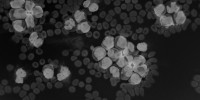
Pathways in the Treatment of AML
Acute myeloid leukemia (AML) is one of the most common types of leukemia in adults and, more cruelly, the second most common leukemia in children and adolescents after acute lymphoblastic leukemia (ALL). The disease takes a rapid course. If no treatment is given, the leukemia cells spread throughout the body in a very short time.
Studies of pathogenesis, treatment optimization, and identification of prognostic factors have steadily advanced the treatment of pediatric AML over the past 40 years. Around the world, national and international study groups such as the Children’s Oncology Group in the United States, the AML-BFM study group, the Nordic Society for Paediatric Haematology and Oncology (NOPHO), the Medical Research Council (MRC) in the United Kingdom and the Japanese Leukemia Study Group and many more have contributed to the further development of therapy as well as the identification of prognostic factors.
The problem with AML
Although children and adolescents with AML have a much better chance of survival today, AML remains one of the most threatening diagnoses. The 10-year survival rate for children with pediatric Acute Myeloid Leukemia (pAML) is still less than 50%.
Why is that? First, because pAML is a very heterogeneous disease that encompasses many clinical, genomic, epigenomic, and transcriptional subtypes. While genomic/precision medicine has achieved many successes over the past decade, developing targeted therapies for rare pAML subtypes with poor prognosis is often still prohibitively expensive.
Study shows: These pathways should be targeted in the treatment of AML
Researchers wanted to address this challenge, and they set out to identify dysregulated pathways that occur in multiple pAML subtypes and mark poorer clinical outcomes.
 By spanning multiple disease subtypes, treatments targeting such pathways can overcome the cost-per patient barrier and deliver treatments to those most in need.
By spanning multiple disease subtypes, treatments targeting such pathways can overcome the cost-per patient barrier and deliver treatments to those most in need.
They analyzed RNA-seq data from pre-treatment bone marrow of 1489 children with pAML and found that more than 20% of patients have concurrent IL-6, IL-1, IFNα/β, and TNFα signaling activity and worse outcomes. Five highly repetitive patterns of somatic mutations emerged from targeted sequencing of pre-treatment bone marrow samples from affected patients. Using differential expression analysis of the most common genomic subtypes (60 percent of the total), they identified high expression of multiple potential drivers of inflammation-related treatment resistance.
The authors explain:
 Regardless of genomic subtype, we show that JAK1/2 inhibition reduces receptor-mediated inflammatory signaling by leukemic cells. The large number of high-risk pAML genomic subtypes presents an obstacle to the development of mutation-specific therapies. Our results suggest that therapies targeting inflammatory signaling may be effective in multiple genomic subtypes of pAML.
Regardless of genomic subtype, we show that JAK1/2 inhibition reduces receptor-mediated inflammatory signaling by leukemic cells. The large number of high-risk pAML genomic subtypes presents an obstacle to the development of mutation-specific therapies. Our results suggest that therapies targeting inflammatory signaling may be effective in multiple genomic subtypes of pAML.
Read more about the data, methods and findings here: https://www.nature.com/articles/s41467-022-34965-4